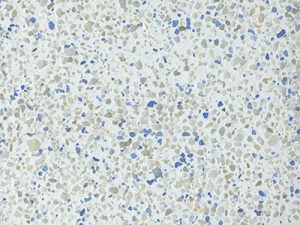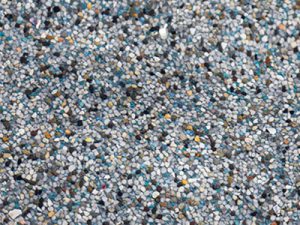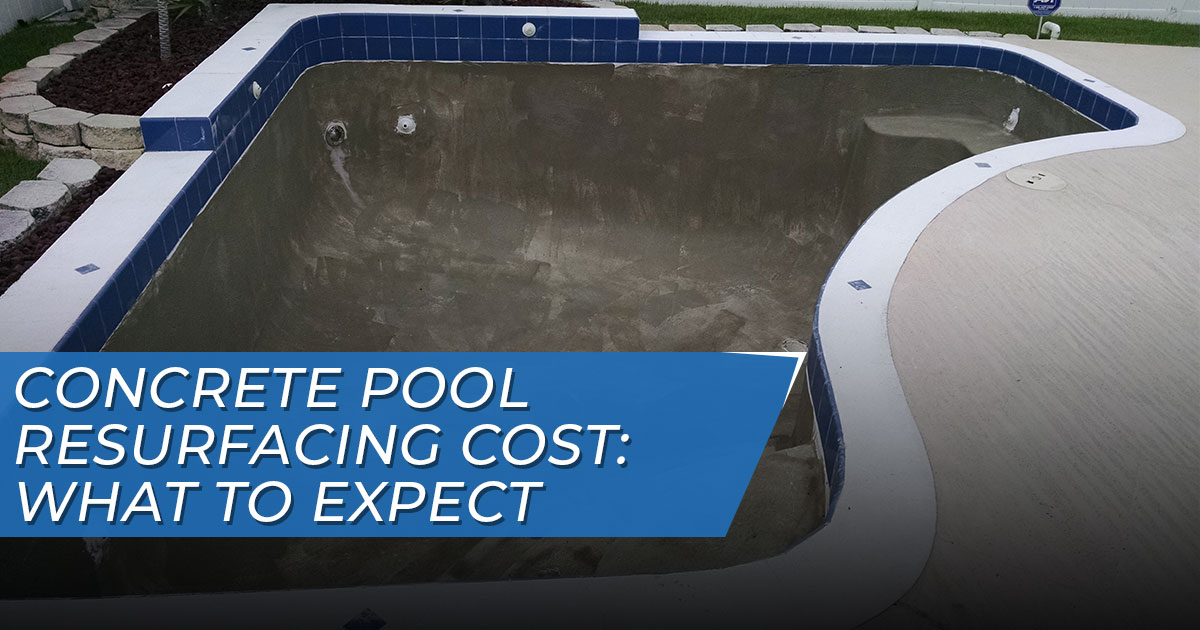Concrete Pool Resurfacing Cost: What to Expect
Your family loved having the pool when first purchasing the home. Yet after a few years, the interior’s appearance has changed. There are cracks along the floor and the colors have faded. Even extensive cleanings haven’t worked to restore the surface to its previous beauty. If this is happening to you then it sounds like it’s time to renovate so let’s dive into the concrete pool resurfacing cost of your best options, so you can plan accordingly.
How Much Does Concrete Pool Resurfacing Cost?
Here at GPS Pools, we’ve dealt with many clients in this same situation. There are just so many factors involved when trying to figure out pool resurfacing costs that many people are not aware of until the job is started. The best place to start is to figure out what materials were used for your concrete pool and the type of finish that you would like our professionals to install. The most popular materials out on the market today are Marquis finishes, Diamond Brite finishes, Pebbletec finishes, and Stonescape finishes.
Related Article: Resurfacing a Pool: The Process and What to Expect
Marquis Finishes
 Diamond Brite pool finishes, also known as Marquis, manufactured by Premix Marbletite consist of a mixture of aggregated pebbles or pieces of quartz placed into the cement that has been modified by a polymer. It is an exposed aggregate where the quartz or pebbles are exposed during the entire installation process and after the finish has cured. It can be custom dyed in a range of colors such as green, blue, white, and grey.
Diamond Brite pool finishes, also known as Marquis, manufactured by Premix Marbletite consist of a mixture of aggregated pebbles or pieces of quartz placed into the cement that has been modified by a polymer. It is an exposed aggregate where the quartz or pebbles are exposed during the entire installation process and after the finish has cured. It can be custom dyed in a range of colors such as green, blue, white, and grey.
Marquis finishes can last from 5 years to 10 years. A common problem our customers experience with Marquis pools is that the interior will begin to erode, discolor, or look stained. This issue is largely due to the quartz aggregate fading or discoloring from the sun or when reacting negatively to the chemicals and pH/alkalinity in the water. Maintaining the right balance is essential to prevent damage, as occasionally hiring a professional to check the chemical balance can help cut done on the future cost of concrete pool resurfacing.
Diamond Brite Finishes

Diamond Brite pool finish is a brand name for a line of exposed aggregate pool finishes. It is polymer-modified cement that has natural quartz aggregate. Pool owners often tell us that it feels more comfortable for their feet after we place it in this smooth finish. Colored quartz is added as it can come in colors such as emerald, blue-gray, aqua blue, and many others. Diamond Brite finishes can last about 8 years- 15 years.
A Diamond Brite finish is strong and durable. It can stand up well to the corrosiveness from chemicals and unbalanced pH levels. Signs to look for to indicate that an old Diamond Brite finish needs resurfacing is that you will see scaling, etching, or cracking. Scaling occurs when using hard water in the pool, while etching is caused when the pH level is too low. If there are pool cracks, also called crazing, this problem often happens when extreme weather conditions impact the finish’s curing process during the installation process.
PebbleTec Finishes
 PebbleTec pool finishes are exposed aggregate surfaces created by mixing round pebbles into cement, as this brand of aggregate has been around for over 25 years. Many pool owners enjoy the look of PebbleTec because it is reminiscent of a lakeside area where there are tiny pebbles along the lake bed. The concrete pool resurfacing cost of using PebbleTec can last for 10 to 20 years.
PebbleTec pool finishes are exposed aggregate surfaces created by mixing round pebbles into cement, as this brand of aggregate has been around for over 25 years. Many pool owners enjoy the look of PebbleTec because it is reminiscent of a lakeside area where there are tiny pebbles along the lake bed. The concrete pool resurfacing cost of using PebbleTec can last for 10 to 20 years.
PebbleTec is a good choice because it is low maintenance and lasts for a very long time, which bumps up the price. It is also corrosion-resistant. The major issues that you may experience with PebbleTec are scaling and calcium buildup due to poor water chemistry. These problems can cause the pebbles to discolor and the colors to fade. Investing in an automatic pool cleaner can keep the floor of the pool clean and remove the buildup before it becomes a problem.
Stonescape Finishes
 Stonescape pool finishes are similar to PebbleTec finishes. It is also an exposed aggregate stone and cement mixture. The major difference with Stonescape is that the stones come in bigger sizes although they do have some mini pebble options.
Stonescape pool finishes are similar to PebbleTec finishes. It is also an exposed aggregate stone and cement mixture. The major difference with Stonescape is that the stones come in bigger sizes although they do have some mini pebble options.
Like PebbleTec, Stonescape will last about the same amount of time and provides the same positive attributes such as strength and durability, as well as negative issues like experiencing scale and calcium buildup. You will see the signs that the pool will need resurfacing when seeing the discoloration of the stones and wear to the cement. Also, keep in mind that exposed aggregate finishes can feel large and bumpy under the feet, which can make your feet feel uncomfortable. So consider how you want the pool floor to feel when walking and bouncing across it before selecting this finish.
Related Article: Time to Resurface the Pool? 8 Signs to Look For
We Can Help You Manage Concrete Pool Resurfacing Costs
When it comes to pool resurfacing, you want to ensure that such a large project runs as smoothly as possible. Here at GPS Pools, we take the hassle out of pool resurfacing by providing an exceptional installation process. It is not a simple DIY project as many things can go wrong. By working with professionals, we can ensure that the job is done right the first time and that you can get a surface finish that will last for years. We proudly serve Odessa, Pebble Creek, Tampa Palms, Wesley Chapel, Seven Springs, Keystone, Lake Fern, and more, from our locations in New Tampa, Land O’Lakes, or Lutz.

